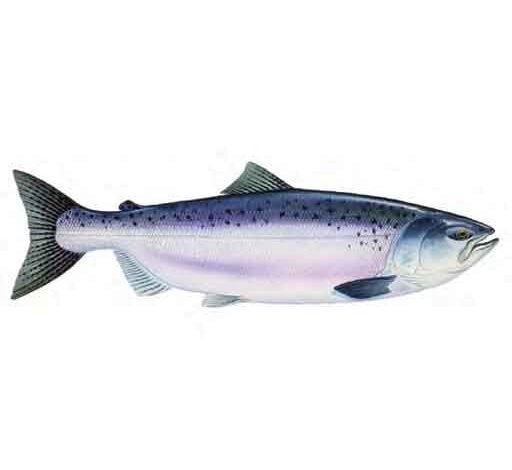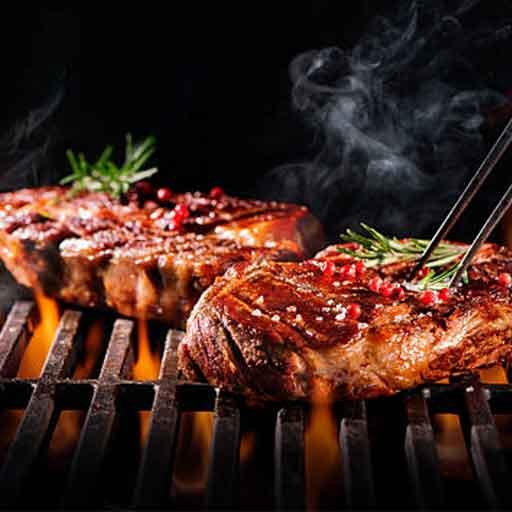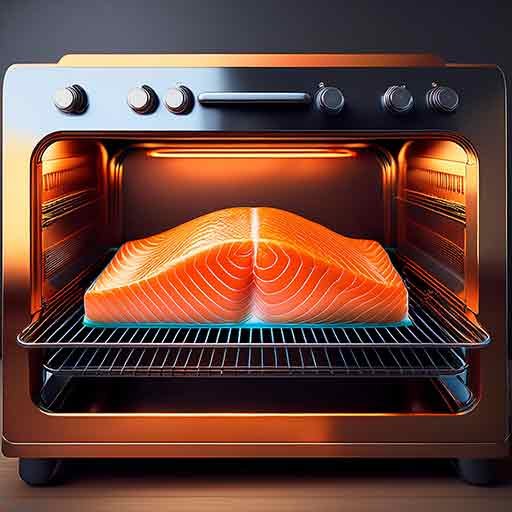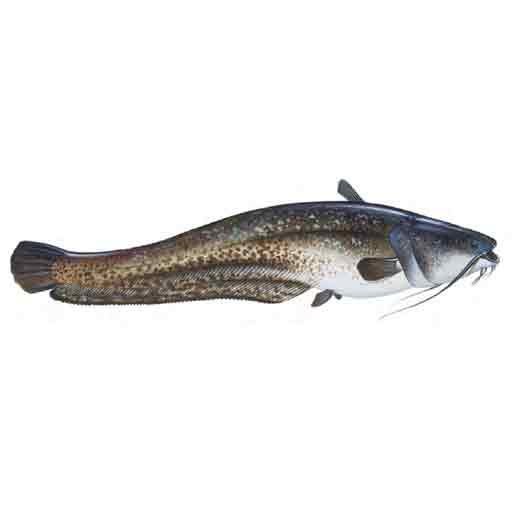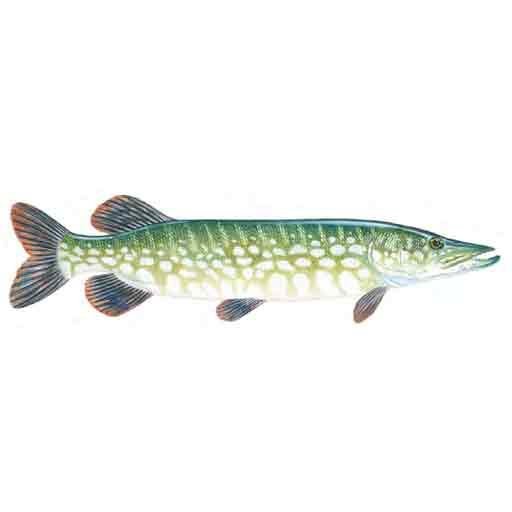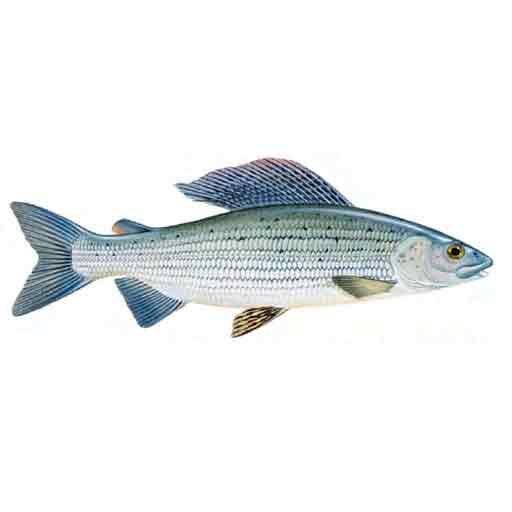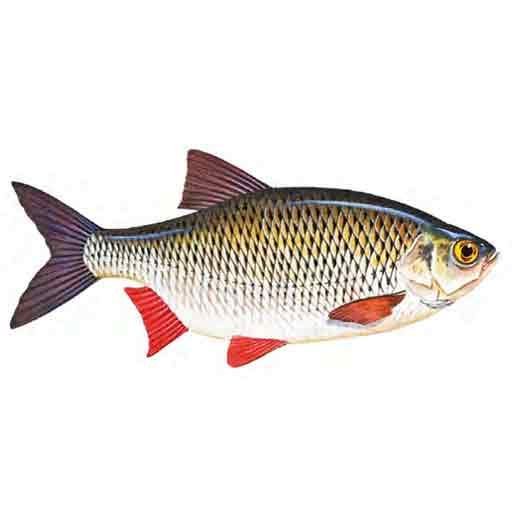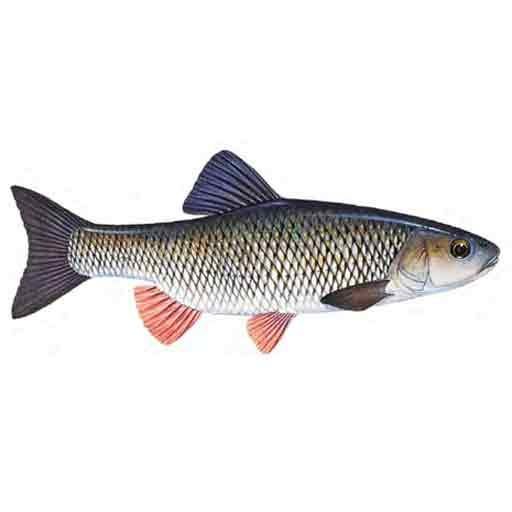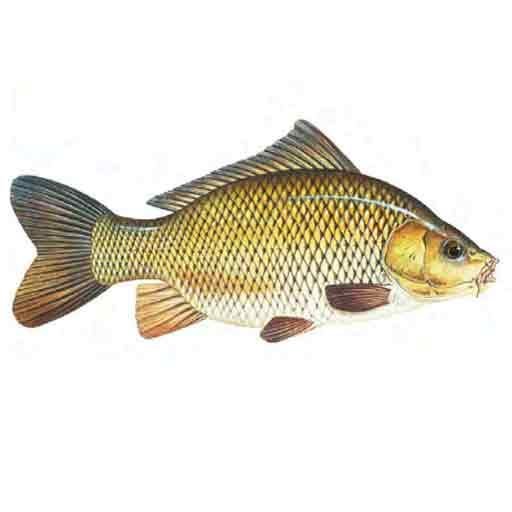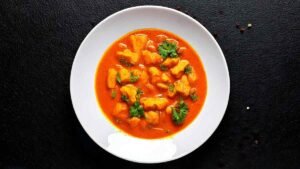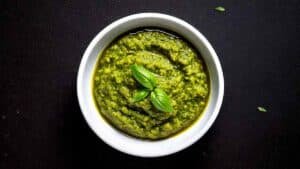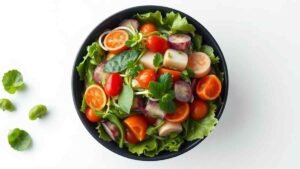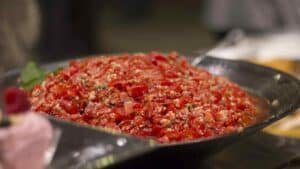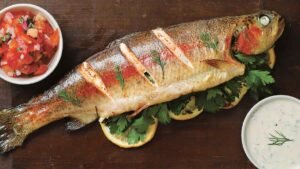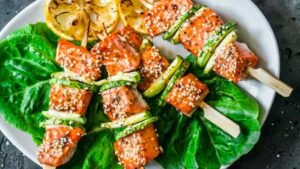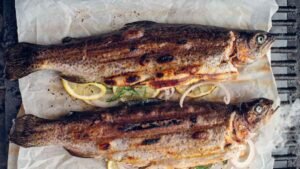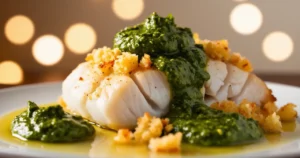Chinook Salmon highly prized game fish are also known as king salmon. Chinook are the largest Pacific salmon and immensely hard-fighting, powerful fish. Like all salmon, they begin their lives in freshwater. Chinook salmon fry can migrate to sea when they are only three months old, but generally, they remain in the spawning rivers for one to three years before migrating to the oceans, where they feed and mature.
These salmon can migrate huge distances at sea, then they return to the rivers they were born in, spawn once, and die. Adult chinook in the oceans are dark green to blue-black on the head and back, and silvery underneath. As they migrate inland, the breeding colors appear, with tinges of brownish reds and purples.
Migrating salmon shoal At times, the cold waters of the Alaska rivers are filled with dense, migrating shoals of chinook salmon. These large numbers of fish, intent on reaching their spawning ground, are easy prey for large mammals, such as bears.
Types of Chinook
There are two types of Chinook salmon: the “stream type”, found mostly in the headwaters of larger river systems, and the “ocean type”, found mostly in coastal streams and rivers. Stream-type chinook spend a long time in freshwater, whereas those of the ocean type often remain in freshwater for only a year before migrating to the ocean. During their ocean-living phase, ocean-type chinook salmon usually remain in coastal waters.
Offshore Trolling
Chinook salmon are among several Pacific salmon species that are successfully caught when feeding in the ocean, before returning to rivers for spawning. Anglers take them by trolling just offshore and in the estuaries, as the fish return. They can be caught in large numbers when big shoals are found. Like virtually all salmon, chinook do not feed when they enter river systems, so the river angler must induce the salmon to take lures or flies when they would not do so naturally.
